 Two species cannot coexist if their needs are identical. Competition for food, water, and shelter is bad enough within the same species, if you add another species one will out-compete the other. The ecological niche relies on the assumption that diversity will always give one species an advantage, no matter how slight. If each species has something unique, then no two species will occupy exactly the same niche. The species Dog Trainer needs to diversify in order to compete.
Two species cannot coexist if their needs are identical. Competition for food, water, and shelter is bad enough within the same species, if you add another species one will out-compete the other. The ecological niche relies on the assumption that diversity will always give one species an advantage, no matter how slight. If each species has something unique, then no two species will occupy exactly the same niche. The species Dog Trainer needs to diversify in order to compete.
Dog trainers already occupy a niche by their service area. You cannot compete with a trainer in Ohio if you’re living in Oregon. But is location niche enough? If you’re doing exactly what everyone else is doing in the exact same way then someone will out-compete the other. There must be a difference for a dog owner to choose you over the competition. “When two species are in competition, the outcome will be either the exclusion of one species or the evolution of one or both species resulting in less or no competition.” Either one trainer will win all the resources or both will evolve so there is less competition. It’s time to evolve.
Who is competing with you for your resources?
If you are alone in your service area then you basically have nothing to worry about. Dog owners will call you for whatever they need. Your limitation may be your own time availability and resources, not competition from other trainers. If other trainers are in your area then you have competition over resources, namely dog owners. The people that hire you now have some choices, so who are they going to hire? How will they decide?
It is important to keep up with who and what your competition is doing and offering. Pretend to be a dog owner and do some internet searches for your location plus “dog training” and “dog trainer.” If you’re in a high competition area you may be surprised to find the top people in each search are different. Does their service area overlap with yours? Is it a multiple trainer company that can hit a wider audience? Are they also offering other services like pet sitting, dog walking, or transportation? Do they offer the same services as you? If you offer group and in-home instruction, do they do the same? Who are they targeting? What service is first on the home page of the website? This will give you a clue as to what they really want to concentrate on.
Finally, what do their reviews look like? Do they have any? Are they good, bad, or in the middle? Are they active on social media? Do their followers interact with them on social media? Do they have a YouTube channel with weekly videos? Or is there one video on their channel from 5 years ago?
Once you gather all this information you can see who your closest competition is and how they’re doing with it. You can then diversify.
The Price Niche
After location the next niche trainers normally use is setting their prices in comparison to their competition. Do you match them, undercut them, or charge more than them? The normal inclination is to match prices thinking that is what the local population is willing to pay. The problem with that is your competition may have set prices during a recession and never raised them, or set them during a boom and never lowered them.
Price comparison shoppers will always be there, but they don’t make the best clients. They chose you because you met their price point, not because you’re great and not because they like they way you do things. You cost what they want to pay, that’s it. The flip side is the shopper who wants the best and thinks the best costs more. There are fewer of these in your local population, but if you’re going to go after them you will need to be much higher than your competition. This isn’t a $10 more kind of thing. This is the $100 surround sound system vs the $4000 in-home theater system thing. If you’re going to go after this market the difference needs to be significant.
Unless your competition is targeting a vastly different customer you should never match prices. Matching services and pricing means high competition for the same target resource: dog owners who are willing to spend a specific amount of money on training services. If you feel the need to match prices then there must be something different about you to make you stand out.
The Certification Niche
A lot of trainers use certifications and education as a way to stand out against the competition. While education and proof of knowledge standards are great for the profession, they haven’t quite filtered down to the average dog owner yet. It’s been said many times that clients don’t understand all the letters after a trainer’s name, and if they did, there’s really no data on whether they’d care or not.
We know the certification niche works in some cases because there are quite a few organizations that are now offering them. More trainers are adding letters after their name, which means they are either viewing them as an industry standard or a marketing tactic. It’s probably more the industry standard view. A certification niche can work in some areas. College towns and areas with residents with advanced college degrees will see the logical benefit of education, even if they don’t value it as a choice selector. By all means, fly your certification flags and put logos on marketing material. You worked hard to get them and deserve to use them, they just probably aren’t helping people choose you over the competition.
The Method Niche
The nice vs. not nice training method niche is one we see often. Using “positive” and “nice” and “friendly” training as a way to find a market of people who want to be nice to their dogs is certainly a way to separate you from the competition. Unfortunately, most people want to be nice to their dogs. In fact, they think they’re already being nice to their dogs even if they’re throwing chains at them. People want to be nice to their dogs but they also want their dog to stop peeing on the sofa and refusing to come when called. They don’t particularly care how they get these things to stop, they just need them to stop.
That said, the “positive” and “nice” and “friendly” approach isn’t a bad idea when we switch it to people skills. The dogs aren’t writing the checks, the humans are, so if your niche is that you’re kind and friendly and supportive to people then you’ll have a leg up on the competition. This niche works when your goal is to be someone’s dog trainer. Your feedback for this niche is clients saying, “Let me give you the name of my dog trainer,” instead of “Oh, I have a great dog trainer.” This is the personal approach; the bonding of client and coach where you become “theirs” instead of just an “a”.
The Dog Type Niche
This is the meat and potatoes of the niche market that separates the girls from the Girl Scouts. This niche concentrates on some segment of the dog population such as breed, age, and problem behaviors. You love poodles, so go after the poodle owners. You love puppies, so go after the puppy owners. You love dogs that hide behind things, so go after the fearful dog owners.
Marketing in this niche can take some skill and some research. For instance, you need to be sure someone in your local habitat isn’t also a poodle lover going after poodle owners. If there are already three trainers targeting puppy owners you will either need to do things very differently or find another niche. Remember, the whole point of the niche is to lower competition, not increase it, so finding an untargeted market segment is the only way to do it.
Marketing language for this niche will move away from generalities like “dog trainer” to “puppy trainer” or “poodle trainer.” The problems you list will move away from a general list of behaviors to those more commonly found in your target market. Targeting puppies might use teething and jumping and sleeping through the night, while targeting poodles might move more to handling for grooming and curbing zoomies.
Once you find your market look at your previous clients who were your ideal customers and what problems they were having. Look at intake forms and emails from them to find the language they used to describe their dog. Make a list of terms and then compare. You’ll find that the language people use to describe their dog or problem are pretty consistent. These are also the terms they’re going to use to search for a trainer to help them. These lower competition keywords are your low hanging fruit to integrate into marketing materials. It really doesn’t matter whether you are targeting a breed or a problem or an age, there is a commonality to the language people use to describe their dogs. These words are how you target your niche.
The Human Type Niche
The alternative to the Dog Type niche is the Human Type niche. This segment targets specific human groups defined by age, family status, or special circumstances. Seniors, families, first-time pet owners, college students, and stay at home moms would fit in this niche.
Marketing language for this niche is focused on the human need instead of the dog problem. Understanding your targeted niche means understanding what problems they’re likely to encounter and how to help them. For example, college students may have problems with separation anxiety or how to deal with unruly roommates. A senior might walk slower, travel more, or need the dog to be okay when grandkids come over once a month. Understanding the environment and conditions each segment creates means you can sell personalized preventative training instead of problem solving. While problems will certainly occur, being the guru of a human niche means you’ll have the experience to solve them.
Getting your message in front of your chosen market segment can be a bit different than trying to tap the general dog owner. You need to find out where they hang out in your area, what they read or view, and how to reach them. Don’t discount senior centers and public parks and local neighborhood apps to reach these audiences. Be clear who you are targeting with keywords concentrating on the human need and experience instead of the dog’s.
The Activity Type Niche
The Activity Type niche is where the crazy people are. Okay, they’re not really crazy, but they’re usually goal driven and competitive. This segment isn’t so much about problem solving as it is about skill building. It also covers both ends of the leash since good handling skills are needed by the human to compete well.
Agility, scent work, obedience, tricks, canine parkour, hiking, kayaking, and herding all fall into this niche. For some of these activities interest and skill is not enough, clients want titles and a lot of experience. Experience does tend to include training multiple breeds to do the task, not just your own dogs.
This niche lends itself to creating communities, and you really should view part of your task will be community building. The human social aspect of classes and competing and engaging in the activity is part of why people do it. Being a great trainer in a sport or activity will allow you to introduce people to each other and build friendships just by the very nature of how you set up the learning environment. Clients who fall into this niche are usually in it for the long haul, so cultivate each one and you’ll have a repeat customer for a very long time.
While marketing to this niche is pretty straightforward since the keywords are built into the activity language, this segment lends itself to using a lot more visual images and video than other segments. Video of a calm dog enjoying a ride on a kayak, agility runs, photos of ribbons, and huge smiles will go farther than a website page called “Canine Kayak Training”.
This niche can be easier to reach by attending local events and taking part in the sport. On the plus side, all those entry fees and travel expenses are tax deductible.
Final Thoughts
Marketing to everyone is marketing to none. This is true in the ecology of every profession, but perhaps more so with dog training. Reducing your competition by doing what you enjoy for a price you can live on will bring you years of a successful career instead of slogging through clients you hate just to get by.
Did we miss a niche? What’s your marketing segment? Let us know in the comments!Save
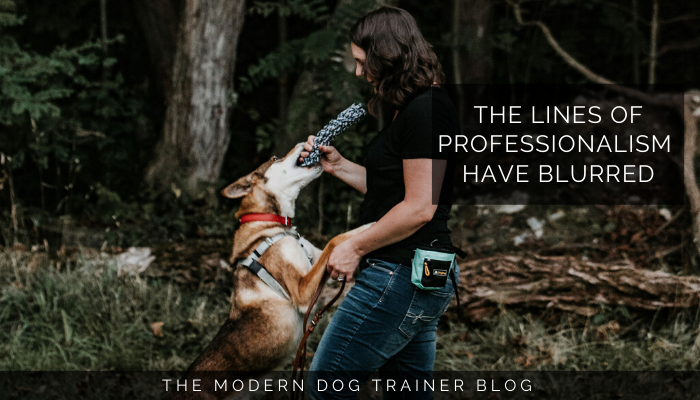



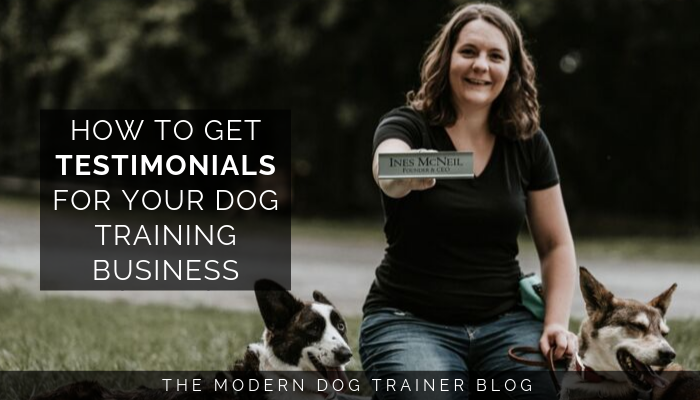


 As dog trainers, we often have a limited budget to start up and run our businesses. Fortunately, there are a few free tools available to improve your efficiency and make your business run smoother and faster without extra financial burden.
As dog trainers, we often have a limited budget to start up and run our businesses. Fortunately, there are a few free tools available to improve your efficiency and make your business run smoother and faster without extra financial burden.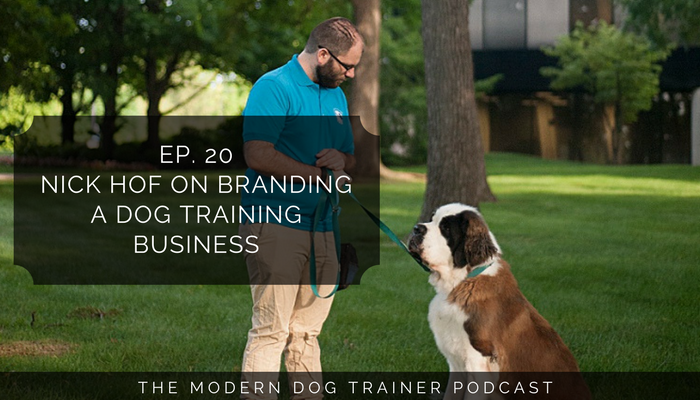


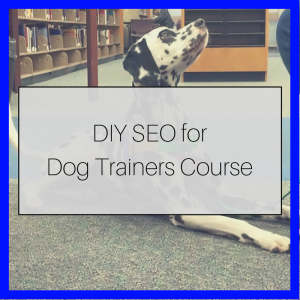


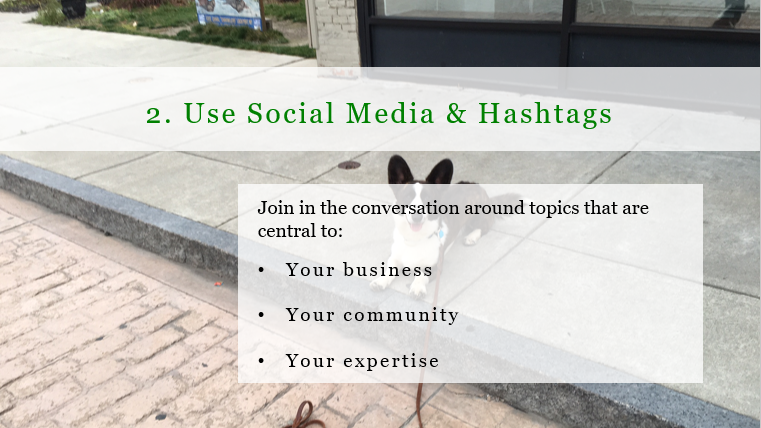
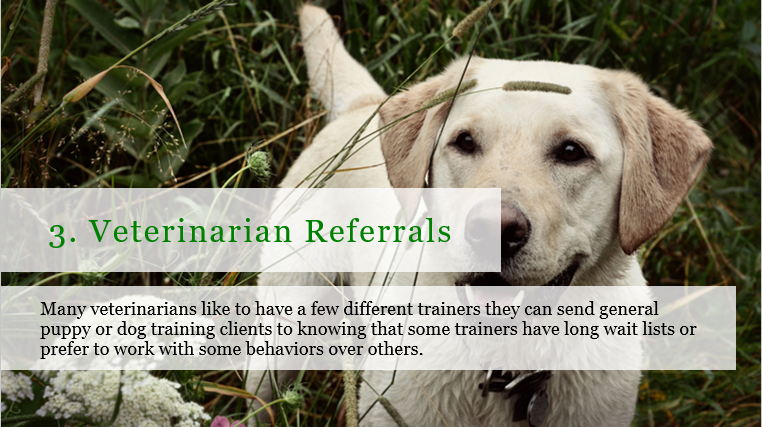
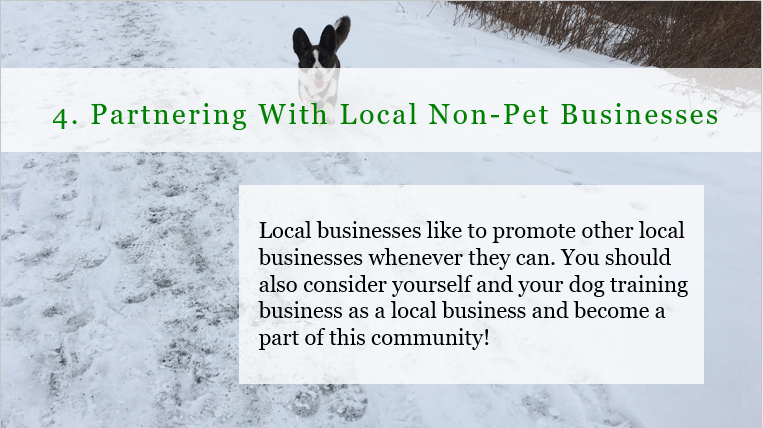


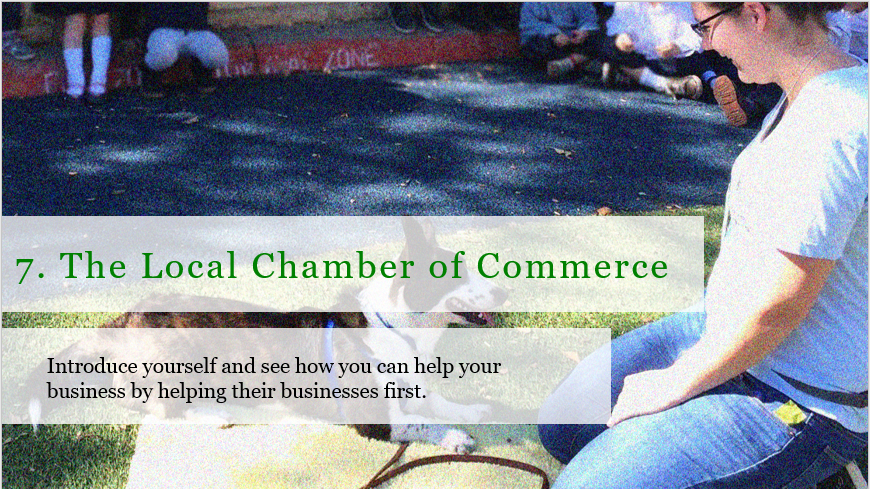

 It’s not a secret that dog trainers spend a lot of time on social media. Why not optimize your time on Facebook to grow your business?
It’s not a secret that dog trainers spend a lot of time on social media. Why not optimize your time on Facebook to grow your business?

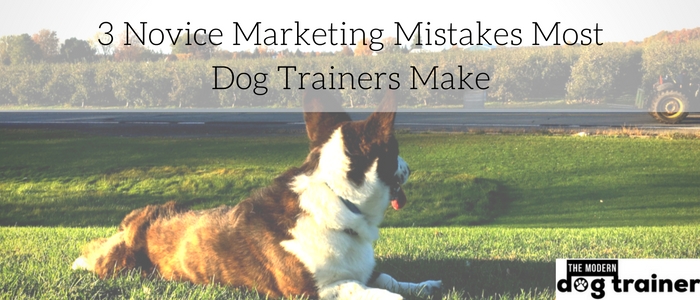 When you are just starting out, it is tempting to take shortcuts in order to get more clients. There are endless ways to get the word out, but some can be costly with a low to no return on investment if you aren’t careful. You’ll be bombarded by calls from social media agencies and Yelp advertising reps, but don’t succumb to the temptation to give away a bit of cash for dreamy promises.
When you are just starting out, it is tempting to take shortcuts in order to get more clients. There are endless ways to get the word out, but some can be costly with a low to no return on investment if you aren’t careful. You’ll be bombarded by calls from social media agencies and Yelp advertising reps, but don’t succumb to the temptation to give away a bit of cash for dreamy promises.

